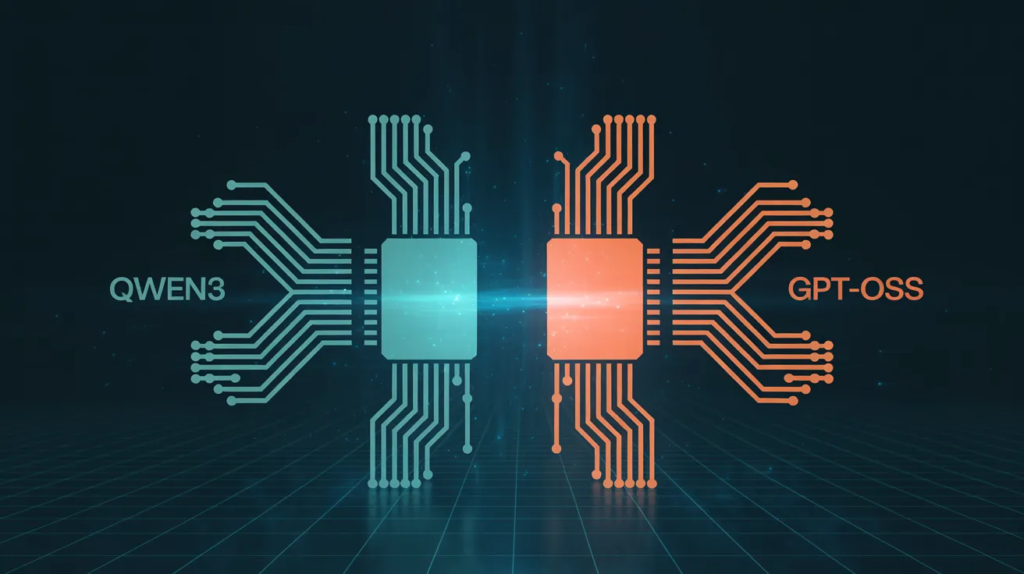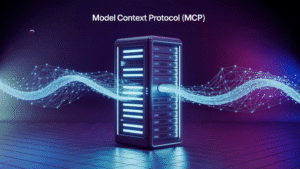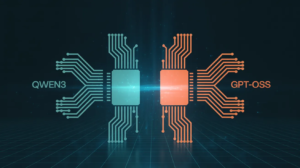MoE Architecture Comparison: Qwen3 30B-A3B vs. GPT-OSS 20B

This article provides a technical comparison between two recently released Mixture-of-Experts (MoE) transformer models: Alibaba’s Qwen3 30B-A3B (released April 2025) and OpenAI’s GPT-OSS 20B (released August 2025). Both models represent distinct approaches to MoE architecture design, balancing computational efficiency with performance across different deployment scenarios.
Model Overview
Sources: Qwen3 Official Documentation, OpenAI GPT-OSS Documentation
Qwen3 30B-A3B Technical Specifications
Architecture Details
Qwen3 30B-A3B employs a deep transformer architecture with 48 layers, each containing a Mixture-of-Experts configuration with 128 experts per layer. The model activates 8 experts per token during inference, achieving a balance between specialization and computational efficiency.
Attention Mechanism
The model utilizes Grouped Query Attention (GQA) with 32 query heads and 4 key-value heads³. This design optimizes memory usage while maintaining attention quality, particularly beneficial for long-context processing.
Context and Multilingual Support
Native context length: 32,768 tokens
Extended context: Up to 262,144 tokens (latest variants)
Multilingual support: 119 languages and dialects
Vocabulary: 151,936 tokens using BPE tokenization
Unique Features
Qwen3 incorporates a hybrid reasoning system supporting both “thinking” and “non-thinking” modes, allowing users to control computational overhead based on task complexity.
GPT-OSS 20B Technical Specifications
Architecture Details
GPT-OSS 20B features a 24-layer transformer with 32 MoE experts per layer⁸. The model activates 4 experts per token, emphasizing wider expert capacity over fine-grained specialization.
Attention Mechanism
The model implements Grouped Multi-Query Attention with 64 query heads and 8 key-value heads arranged in groups of 8¹⁰. This configuration supports efficient inference while maintaining attention quality across the wider architecture.
Context and Optimization
Native context length: 128,000 tokens
Quantization: Native MXFP4 (4.25-bit precision) for MoE weights
Memory efficiency: Runs on 16GB memory with quantization
Tokenizer: o200k_harmony (superset of GPT-4o tokenizer)
Performance Characteristics
GPT-OSS 20B uses alternating dense and locally banded sparse attention patterns similar to GPT-3, with Rotary Positional Embedding (RoPE) for positional encoding¹⁵.
Architectural Philosophy Comparison
Depth vs. Width Strategy
Qwen3 30B-A3B emphasizes depth and expert diversity:
48 layers enable multi-stage reasoning and hierarchical abstraction
128 experts per layer provide fine-grained specialization
Suitable for complex reasoning tasks requiring deep processing
GPT-OSS 20B prioritizes width and computational density:
24 layers with larger experts maximize per-layer representational capacity
Fewer but more powerful experts (32 vs 128) increase individual expert capability
Optimized for efficient single-pass inference
MoE Routing Strategies
Qwen3: Routes tokens through 8 of 128 experts, encouraging diverse, context-sensitive processing paths and modular decision-making.
GPT-OSS: Routes tokens through 4 of 32 experts, maximizing per-expert computational power and delivering concentrated processing per inference step.
Memory and Deployment Considerations
Qwen3 30B-A3B
Memory requirements: Variable based on precision and context length
Deployment: Optimized for cloud and edge deployment with flexible context extension
Quantization: Supports various quantization schemes post-training
GPT-OSS 20B
Memory requirements: 16GB with native MXFP4 quantization, ~48GB in bfloat16
Deployment: Designed for consumer hardware compatibility
Quantization: Native MXFP4 training enables efficient inference without quality degradation
Performance Characteristics
Qwen3 30B-A3B
Excels in mathematical reasoning, coding, and complex logical tasks
Strong performance in multilingual scenarios across 119 languages
Thinking mode provides enhanced reasoning capabilities for complex problems
GPT-OSS 20B
Achieves performance comparable to OpenAI o3-mini on standard benchmarks
Optimized for tool use, web browsing, and function calling
Strong chain-of-thought reasoning with adjustable reasoning effort levels
Use Case Recommendations
Choose Qwen3 30B-A3B for:
Complex reasoning tasks requiring multi-stage processing
Multilingual applications across diverse languages
Scenarios requiring flexible context length extension
Applications where thinking/reasoning transparency is valued
Choose GPT-OSS 20B for:
Resource-constrained deployments requiring efficiency
Tool-calling and agentic applications
Rapid inference with consistent performance
Edge deployment scenarios with limited memory
Conclusion
Qwen3 30B-A3B and GPT-OSS 20B represent complementary approaches to MoE architecture design. Qwen3 emphasizes depth, expert diversity, and multilingual capability, making it suitable for complex reasoning applications. GPT-OSS 20B prioritizes efficiency, tool integration, and deployment flexibility, positioning it for practical production environments with resource constraints.
Both models demonstrate the evolution of MoE architectures beyond simple parameter scaling, incorporating sophisticated design choices that align architectural decisions with intended use cases and deployment scenarios.
Note: This article is inspired from the reddit post and diagram shared by Sebastian Raschka.
Sources
Qwen3 30B-A3B Model Card – Hugging Face
Qwen3 Technical Blog
Qwen3 30B-A3B Base Specifications
Qwen3 30B-A3B Instruct 2507
Qwen3 Official Documentation
Qwen Tokenizer Documentation
Qwen3 Model Features
OpenAI GPT-OSS Introduction
GPT-OSS GitHub Repository
GPT-OSS 20B – Groq Documentation
OpenAI GPT-OSS Technical Details
Hugging Face GPT-OSS Blog
OpenAI GPT-OSS 20B Model Card
OpenAI GPT-OSS Introduction
NVIDIA GPT-OSS Technical Blog
Hugging Face GPT-OSS Blog
Qwen3 Performance Analysis
OpenAI GPT-OSS Model Card
GPT-OSS 20B Capabilities
Michal Sutter is a data science professional with a Master of Science in Data Science from the University of Padova. With a solid foundation in statistical analysis, machine learning, and data engineering, Michal excels at transforming complex datasets into actionable insights.













